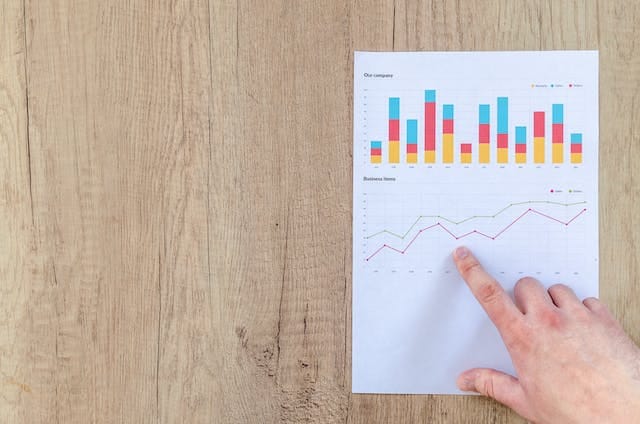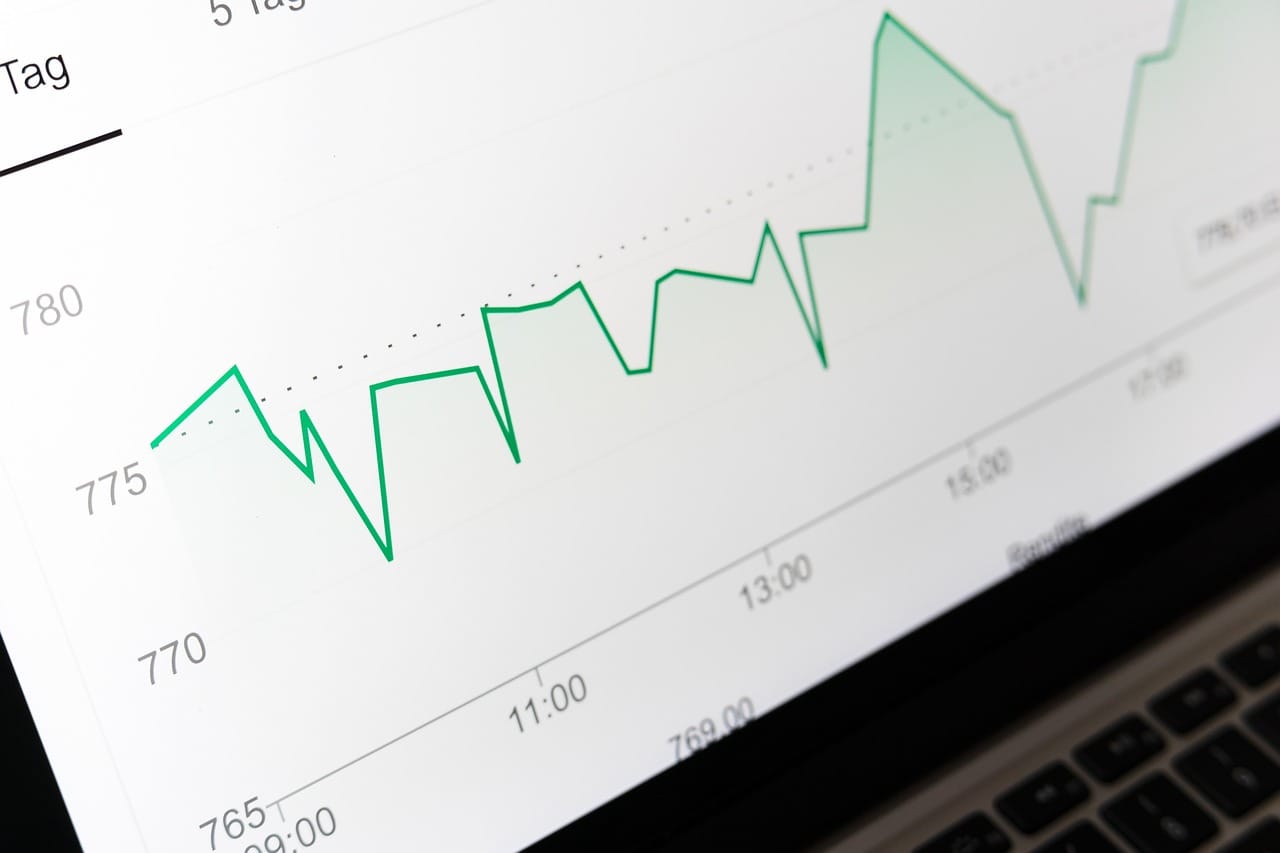Understanding deflation: What is it and how does it impact the economy?
Deflation, a sustained decrease in prices, impacts the economy by reducing consumer spending, increasing debt burden, stifling business profits, and risking a deflationary spiral, prompting economic decline

Deflation, a term frequently mentioned in economic discussions, refers to the sustained decrease in the general price level of goods and services. Unlike inflation, where prices rise, deflation occurs when prices fall over an extended period. This economic phenomenon can have far-reaching implications for individuals, businesses, and governments. Understanding the causes and consequences of deflation is crucial for navigating the complexities of the global economy.
Deflationary pressures can stem from various factors, such as decreased demand, technological advancements, or changes in production costs. When consumers become hesitant to spend, businesses may lower prices to stimulate demand, creating a cycle of falling prices. However, deflation also has its downsides. As prices decrease, the value of assets and investments may decline, leading to a decrease in consumer spending and economic growth. Additionally, deflation can increase the burden of debt, making it harder for individuals and businesses to repay loans.
Historically, deflationary periods have occurred, providing valuable lessons for understanding its impact. One such example is the Great Depression of the 1930s, where falling prices exacerbated economic downturns and led to widespread unemployment. Japan's experience with deflation in the 1990s and early 2000s also offers insights into the challenges of overcoming deflationary pressures. By examining these historical cases, policymakers can gain a better understanding of the potential risks and strategies for mitigating the effects of deflation.
Causes of deflation: Factors that contribute to falling prices

Deflation can arise from a combination of factors, each contributing to the overall decrease in prices. One significant cause of deflation is a decline in demand. When consumers become more cautious with their spending, businesses may reduce prices to attract customers. This decrease in demand-driven deflation can create a cycle where falling prices further discourage spending, leading to a deflationary spiral.
Technological advancements and increased productivity can also contribute to deflation. As industries adopt more efficient methods of production, costs decrease, allowing businesses to lower prices while maintaining profitability. While this may seem beneficial for consumers, it can create challenges for businesses, especially those operating in competitive markets.
Changes in production costs, such as a decrease in the prices of raw materials or labor, can also lead to deflation. When input costs decrease, businesses may pass on those savings to consumers, resulting in lower prices. However, if production costs fall significantly, businesses may face challenges in maintaining profitability, potentially leading to layoffs and reduced economic activity.
In summary, deflation can be caused by factors such as decreased demand, technological advancements, and changes in production costs. While falling prices may initially appear beneficial for consumers, it can have adverse effects on businesses and the overall economy.
Historical examples of deflation: Lessons from past deflationary periods
Understanding the impact of deflation requires examining historical examples where falling prices posed challenges for economies. One notable case is the Great Depression of the 1930s, which was characterized by a severe deflationary environment. As prices plummeted, consumers delayed purchases, leading to decreased demand and increased unemployment. The deflationary spiral further worsened the economic downturn, highlighting the risks associated with sustained deflation.
Japan's experience with deflation in the 1990s and early 2000s also provides valuable insights. After a period of rapid economic growth, Japan faced a prolonged deflationary period, known as the "Lost Decade." Falling prices hindered economic growth, as consumers delayed spending in anticipation of even lower prices. This deflationary mindset created challenges for businesses, leading to decreased investment and stagnant economic activity.
These historical examples demonstrate the risks associated with deflation and highlight the importance of proactive policy responses. Governments and central banks have learned from these experiences and developed strategies to combat deflationary pressures, emphasizing the importance of stimulating demand and preventing a deflationary spiral.
The impact of deflation on consumers: How falling prices affect everyday life
The impact of deflation on consumers is multifaceted, with both positive and negative implications. On the surface, falling prices may appear beneficial, as consumers can purchase goods and services at a lower cost. This can lead to increased purchasing power and improved affordability of essential items.
However, deflation can also have adverse effects on consumers. In a deflationary environment, individuals may delay purchases, anticipating even lower prices in the future. This delay in spending can have a detrimental impact on businesses and the overall economy. Additionally, falling prices can lead to a decline in wages, as businesses struggle to maintain profitability. This decrease in wages can further reduce consumer spending power, creating a cycle of decreased demand and economic stagnation.
Furthermore, deflation can impact borrowers and savers differently. Individuals with fixed-rate debts may benefit from falling prices, as the real value of their debt decreases over time. However, savers may face challenges, as the return on their investments may also decline. This can create financial uncertainty and make it harder for individuals to plan for the future.
In summary, while falling prices may initially seem advantageous for consumers, the long-term effects of deflation can be complex. Individuals may experience increased purchasing power, but the overall impact on the economy and personal finances should be carefully considered.
Effects of deflation on businesses: Challenges and opportunities for companies
Deflation poses unique challenges and opportunities for businesses. On one hand, falling prices can lead to decreased profitability, as businesses may need to reduce prices to remain competitive. This can create challenges for industries with high fixed costs, such as manufacturing or infrastructure development. Additionally, deflation can lead to decreased demand, as consumers delay purchases in anticipation of even lower prices.
However, deflation also presents opportunities for businesses to adapt and innovate. Companies that can reduce their production costs or improve efficiency may be able to lower prices while maintaining profitability. This can attract cost-conscious consumers and potentially gain a competitive advantage. Additionally, falling prices can create opportunities for investment, as businesses can acquire assets or expand their operations at lower costs.
Businesses operating in a deflationary environment must carefully analyze market conditions and adapt their strategies accordingly. This may involve focusing on cost reduction, diversifying product offerings, or exploring new markets. By embracing innovation and maintaining flexibility, businesses can navigate the challenges and seize the opportunities that arise during deflationary periods.
Deflationary policies: How governments and central banks respond to deflation
When faced with deflationary pressures, governments and central banks have various tools at their disposal to stimulate the economy and combat falling prices. These policies aim to increase demand, encourage investment, and prevent a deflationary spiral.
One common approach is monetary policy, where central banks adjust interest rates to influence borrowing costs and stimulate economic activity. During deflationary periods, central banks may lower interest rates to encourage borrowing and investment. This can increase spending and stimulate demand, helping to counteract the downward pressure on prices. Additionally, central banks can employ unconventional measures, such as quantitative easing, to inject liquidity into the economy and promote lending.
Fiscal policy, which involves government spending and taxation, can also play a role in combating deflation. Governments can implement expansionary fiscal policies, such as increasing public spending or cutting taxes, to boost aggregate demand. This can encourage consumer spending and stimulate economic growth.
In some cases, governments may resort to direct intervention in the economy, such as implementing price controls or subsidies. These measures aim to stabilize prices and support industries facing significant challenges due to deflation. However, such interventions need to be carefully managed to avoid unintended consequences and distortions in the market.
Overall, governments and central banks have a range of policy tools to respond to deflationary pressures. By implementing a combination of monetary and fiscal measures, policymakers can aim to stabilize prices, stimulate demand, and foster economic growth.
Strategies for managing deflation: Tips for individuals and businesses

When faced with deflationary pressures, individuals and businesses need to adopt strategies that allow them to navigate the challenges and seize the opportunities that arise. Here are some tips for managing deflation:
- Diversify income sources: Individuals can explore multiple income streams to mitigate the impact of falling wages or decreased job security. This may involve pursuing freelance work, starting a side business, or investing in income-generating assets.
- Focus on cost reduction: Businesses should analyze their cost structures and identify areas where efficiencies can be achieved. By reducing production costs, companies can lower prices while maintaining profitability.
- Adapt to changing consumer preferences: Falling prices can alter consumer behavior and demand patterns. Businesses should monitor these changes and adjust their product offerings accordingly. Innovation and flexibility are key to staying competitive in a deflationary environment.
- Invest in assets with long-term value: Individuals and businesses should consider investing in assets that have the potential to retain value or appreciate over time. This may include real estate, stocks, or other tangible assets. However, thorough research and professional advice are crucial to minimize risks.
- Stay informed and plan ahead: Both individuals and businesses should stay updated on economic trends and policy developments. By understanding the potential risks and opportunities associated with deflation, individuals can make informed financial decisions and businesses can adapt their strategies accordingly.
Managing deflation requires proactive planning and adaptability. By implementing these strategies, individuals and businesses can navigate the challenges and position themselves for future success.
The relationship between deflation and inflation: Understanding the economic cycle
Deflation and inflation are two opposing forces that shape the economic cycle. While deflation refers to the sustained decrease in prices, inflation denotes the opposite - a general increase in prices. Understanding the relationship between these two phenomena is crucial for comprehending the economic cycle.
In an ideal economic environment, a moderate level of inflation is desirable. It encourages spending, stimulates economic growth, and allows for wage increases. Central banks often target a specific inflation rate as a measure of price stability. However, when inflation is too high, it erodes purchasing power and can lead to economic instability.
Deflation, on the other hand, can disrupt the economic cycle. When prices consistently fall, consumers may delay purchases, expecting even lower prices in the future. This decrease in spending can lead to decreased demand, reduced production, and increased unemployment. The negative consequences of deflation can pose challenges for businesses and the overall economy.
The relationship between deflation and inflation is not always straightforward. In some cases, deflation can be a temporary phenomenon within an overall inflationary environment. This may occur due to specific factors such as technological advancements or changes in production costs. However, when deflation becomes sustained and widespread, it can disrupt economic stability and pose significant challenges.
Central banks and governments play a crucial role in managing the balance between inflation and deflation. Through monetary and fiscal policies, policymakers aim to maintain price stability and foster sustainable economic growth. By carefully monitoring economic indicators and adjusting policies accordingly, they strive to mitigate the risks associated with both inflation and deflation.
In summary, deflation and inflation are interconnected forces that shape the economic cycle. While moderate inflation is generally desirable, sustained deflation can pose challenges for individuals, businesses, and governments. Balancing these forces requires proactive policy responses and a deep understanding of the complex relationship between deflation and inflation.
Investing during deflation: Opportunities and risks in a deflationary environment
Investing during deflationary periods requires careful consideration of the unique opportunities and risks that arise. While falling prices may initially seem discouraging for investors, there are strategies that can be employed to capitalize on a deflationary environment.
One potential investment avenue during deflation is bonds. As interest rates often decline during deflationary periods, bond prices tend to rise. Investors can benefit from capital appreciation and potentially higher yields. However, thorough research and analysis are necessary to identify bonds with a solid credit rating and a low risk of default.
Real estate can also be an attractive investment during deflation. Falling prices may present opportunities to acquire properties at a lower cost. Rental income from real estate can provide a steady cash flow, while the potential for property value appreciation can offer long-term returns.
Investing in commodities can be another strategy to consider during deflation. Certain commodities, such as gold or other precious metals, tend to retain value or appreciate during times of economic uncertainty. These assets can serve as a hedge against inflation and provide a store of value in a deflationary environment.
However, it is important to note that investing during deflation carries risks. As prices decline, the value of investments may also decrease, potentially leading to capital losses. Investors should carefully assess their risk tolerance and diversify their portfolios to mitigate potential losses.
Additionally, deflation can create challenges for specific industries, such as manufacturing or retail. Investors should be mindful of the sectors they choose to invest in and consider the potential impact of deflation on those industries.
In summary, investing during deflation requires a balanced approach that takes into account the unique opportunities and risks of a deflationary environment. As with any investment strategy, thorough research, diversification, and a long-term perspective are key to navigating the complexities of investing during deflation.
Conclusion: Navigating the challenges of deflation and preparing for the future
Deflation, the phenomenon of falling prices, poses challenges and opportunities for individuals, businesses, and governments. Understanding the causes and consequences of deflation is essential for making informed financial decisions and preparing for the future.
Throughout history, deflationary periods have provided valuable lessons, highlighting the risks associated with sustained falling prices. The Great Depression and Japan's "Lost Decade" offer insights into the challenges faced by economies during deflation and the strategies employed to overcome them.
For individuals, deflation can impact purchasing power, employment, and personal finances. By diversifying income sources, focusing on cost reduction, and staying informed, individuals can better navigate the challenges and position themselves for future success.
Businesses, on the other hand, must adapt to changing consumer preferences and market conditions. By focusing on cost reduction, diversifying product offerings, and embracing innovation, companies can seize opportunities and mitigate the negative impact of deflation.
Governments and central banks play a crucial role in managing deflationary pressures. Through monetary and fiscal policies, policymakers aim to stabilize prices, stimulate demand, and foster economic growth.
Investing during deflation requires careful consideration of the unique opportunities and risks. Bonds, real estate, and commodities can present investment avenues, but diversification and thorough research are paramount.
In conclusion, understanding deflation and its implications is essential for navigating the challenges of the global economy. By staying informed, planning ahead, and adopting proactive strategies, individuals, businesses, and governments can prepare for the future and mitigate the risks associated with deflation.




